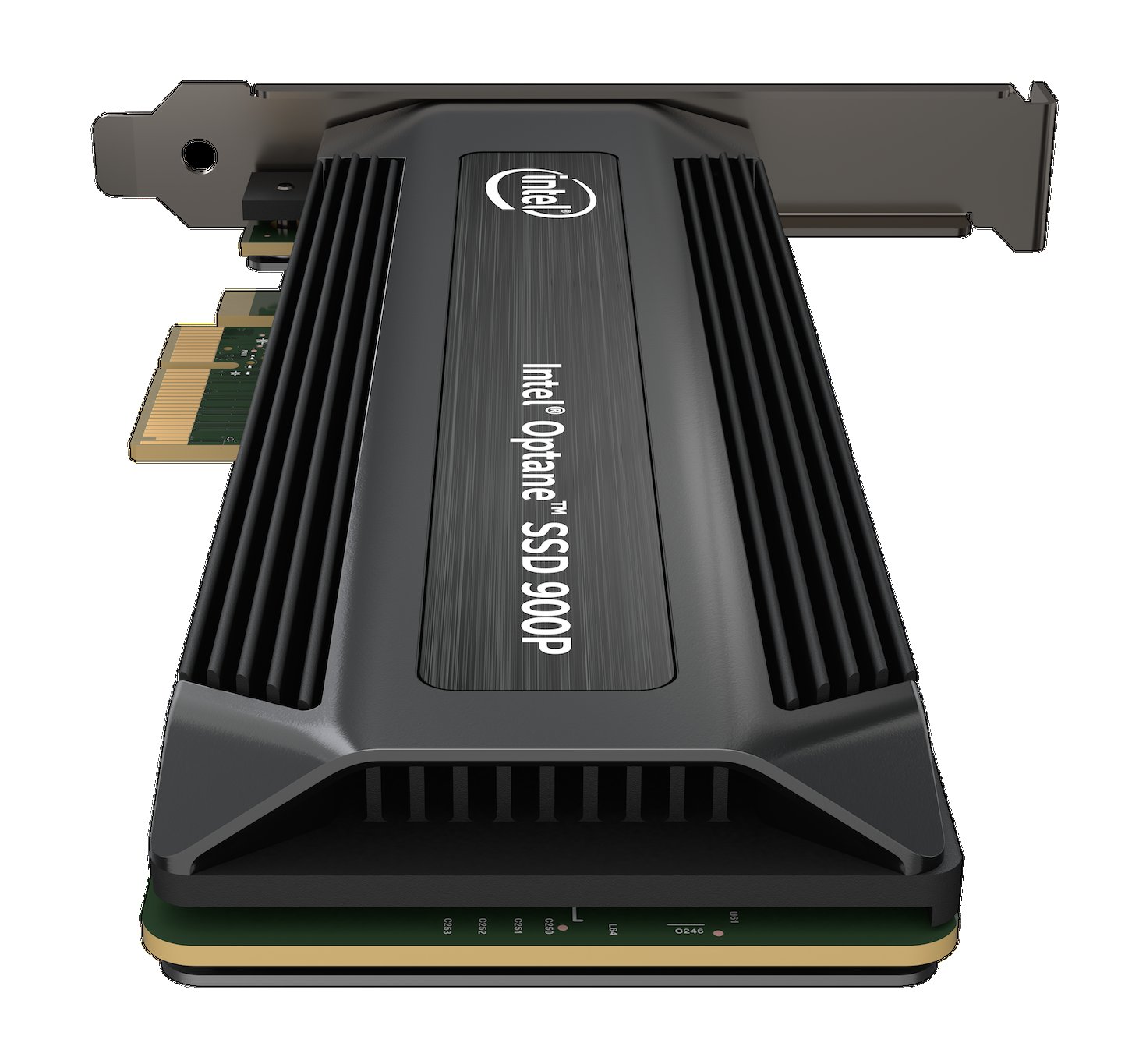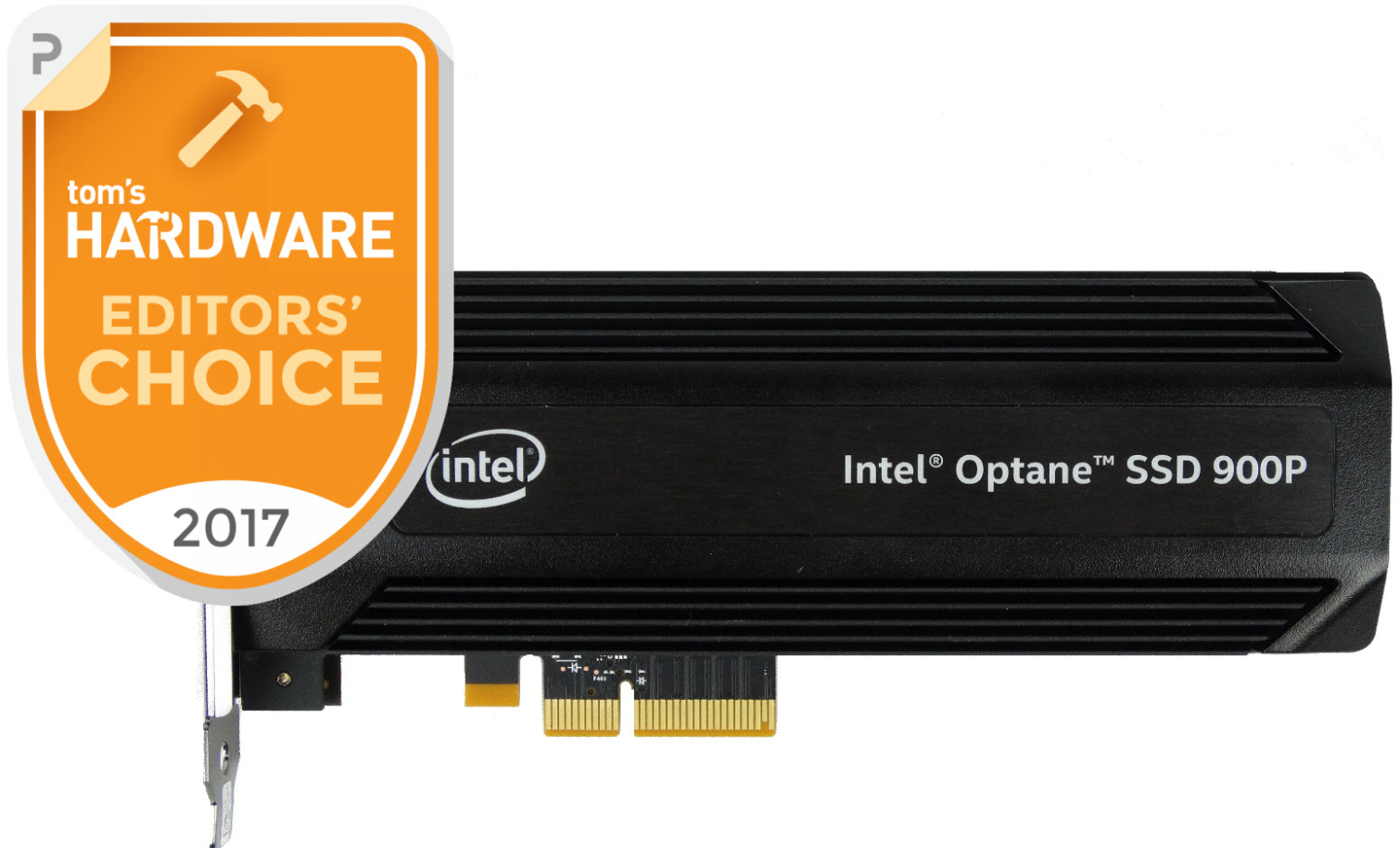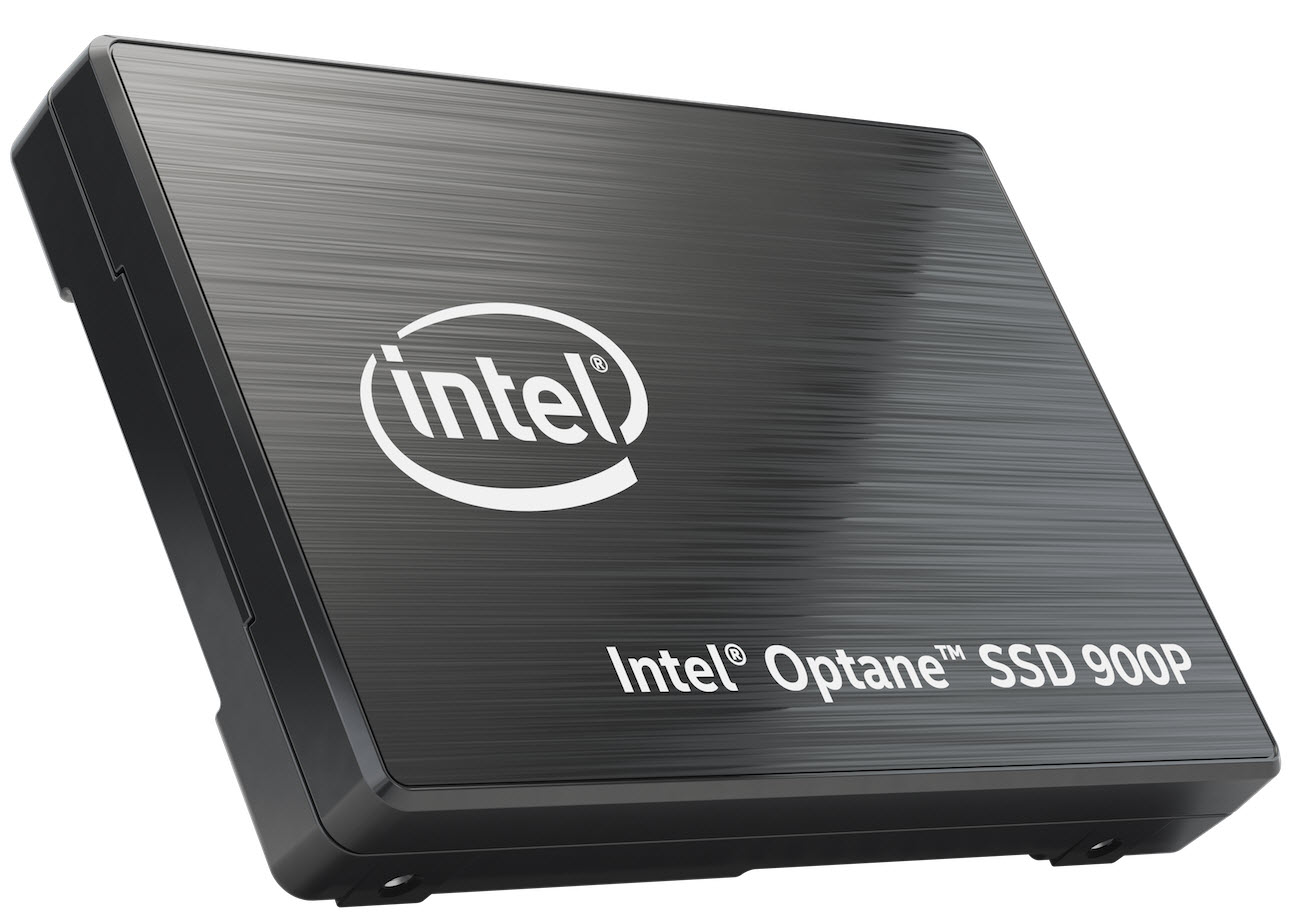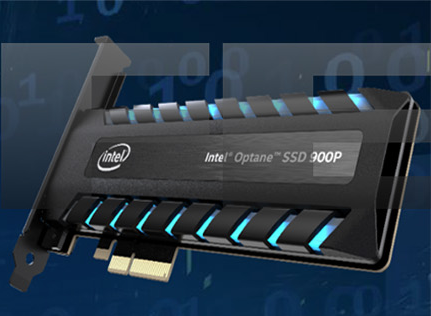Early Verdict
Spend it if you’ve got it. The Intel Optane SSD 900P 480GB is the highest capacity available, but don't expect more performance than the 280GB drive. You get 200GB more storage, but unfortunately, you spend nearly enough to buy an additional 280GB model. The dollars don't always make sense, but the 480GB drive gets you a larger 3D XPoint storage device.
Pros
- +
Consistent performance
- +
Highest 3D XPoint capacity available
- +
The fastest storage technology available
Cons
- -
Higher price per gigabyte (lower value)
- -
High price
Why you can trust Tom's Hardware
Features & Specifications
Update 12/4/2017: We have added the 480GB capacity to the original review, which only included the 240GB drive. The review of the 480GB Optane drive begins on page three. Our conclusions have also been updated on page four.
The time is finally here. You’ve seen 3D Xpoint for the enterprise in our Intel DC P4800X review, and you’ve seen it as a fast cache for the desktop in our Optane Memory Review. But this is the form you’ve really been waiting for: A bootable 3D Xpoint SSD for the desktop. The Intel Optane 900p. Purportedly the fastest consumer SSD known to mankind. It has arrived, and it’s time for us to review what promises to be a massive generational shift in consumer storage.
The Intel Optane SSD 900P is lightning fast thanks to its new 3D XPoint memory, but it's also expensive because the cutting-edge technology is in high demand. Intel and Micron developed 3D XPoint memory for more than a decade in a secret project that created the first new productized memory since 1966. The companies still won't tell us all of the details behind the technology, but outside firms have confirmed it is a form of Phase Change Memory (PCM).
This speedy new memory is designed to fill the performance gap between DRAM and storage, so it crosses into both territorties. 3D XPoint is more expensive than NAND, but it is also faster and provides more endurance. 3D XPoint is slower than DRAM, but it is also cheaper and denser. The best part? Unlike DRAM, it retains data when you remove power, making it a suitable replacement for NAND.
Going into this review, we already knew the Optane SSD 900P would come away as the fastest consumer SSD ever. Intel derived the desktop version from the enterprise-focused DC P4800X, the fastest SSD we've tested. The real question was how much Intel would neuter the consumer version to reduce cost and keep data center administrators from adopting the desktop model as their own.
Intel did find a way to keep enterprise customers from scooping up all of these drives: the desktop Optane SSD 900P comes with one-third the endurance of the data center model and loses some enterprise features, such as SMBus. Nevertheless, the desktop Optane SSD 900P matches or exceeds the DC P4800X's performance specifications, so it promises explosive performance.
Specifications
Intel's bringing the Optane SSD to market in 280GB and 480GB capacities. The drives come in two predictable form factors: a PCIe Add-In Card and a 2.5" U.2 drive with an SFF-8639 connector. Intel will only have four models ready during the initial rollout, the 480GB U.2 will come later in the year. There are two model numbers for the U.2 drives, but we only have the specific numbers for the 280GB drives. One will ship with a standard U.2 cable and the other ships with an M.2 to U.2 adapter.
Get Tom's Hardware's best news and in-depth reviews, straight to your inbox.
The 900P's capacities bookend the 375GB data center DC P4800X. Intel shared a roadmap with us that listed higher capacity enterprise models coming later this year, and even larger drives in 2018. We fully expect the desktop versions to grow in time as well, but Intel hasn't mentioned any definitive plans for future drives.
The Optane 900P provides up to 2,500 MB/s of sequential read throughput, which is 100 MB/s higher than the enterprise DC P4800X. The sequential write needle pegs at 2,000 MB/s, but you'll need to work to get there. The Optane SSD 900P really separates itself from the NAND SSD pack when we compare random performance. The desktop drives reach up to 550,000/500,000 read/write IOPS, which is well beyond any desktop SSD.
How 3D XPoint Works
By now you're accustomed to high random performance specifications with NVMe SSDs, but the Optane products are different. As we demonstrated in our Optane Memory review, the new memory is capable of reaching very high performance at low queue depths. We can even fully saturate the drive with some workloads before reaching a queue depth of 8.
3D XPoint is bit-addressable, so in contrast to NAND-based SSDs that write in larger chunks, the Optane 900P can break 4K data into smaller pieces and scatter it across multiple die, which boosts performance. Each 3D XPoint die also has 64 separate regions that can respond to commands simultaneously, whereas normal NAND has a maximum of four. That should provide an explosive performance gain for desktop PCs.
Unlike NAND, 3D XPoint is a write-in-place memory. That means the SSD controller doesn't have to erase existing data before writing new data. Eliminating the extra write cycle increases endurance and performance while eliminating the normal garbage collection process. That makes the 900P immune to the petty concerns of normal SSDs, like steady-state performance.
Optane's Advantages Over SSDs
The Optane SSD 900P will accelerate any storage-bound workload. Unlike Optane Memory, this is not a cache device, though you could get very creative with storage tiering using 3rd party software. That's a path we would like to explore in the future.
Intel released a list of workloads where the Optane 900P excels compared to NAND-based SSDs:
High Random Read And Write PerformanceHigh Performance At Low Queue DepthsHigh Simultaneous Read And Write PerformanceHigh Read And Write Performance At Small Capacity PointsHigh Performance Maintained As The Drive FillsHeavy Workloads That Cause Drive Wear And Require High Endurance
That covers most types of data access. We don't know anyone who specifically targets a high-performance low-capacity drive, though. Most users shop by price, but the Optane SSD is the only beyond-flash product available so normal shopper behavior probably doesn't apply.
The Intel Optane 900P is a new tier that goes beyond fast, so existing SSDs have just moved down a notch. For instance, the Intel SSD 750 and Samsung 960 Pro are no longer the fastest; now they are "less than Optane."
Pricing, Warranty & Endurance
The Intel Optane SSD 900P will come to market at $389 (280GB) and $599 (480GB). That's expensive. The 900P is roughly three times the cost-per-GB of NAND SSDs.
We do have some concerns, though. The enterprise DC P4800X 375GB currently retails for $1,900 at Newegg. We've never seen one at the $1,520 MSRP. Limited availability is also troubling. Intel has shipped the DC P4800X to data center customers for several months, but finding a drive through the channel is fairly rare. After Flash Memory Summit, we tried to find a P4800X at MSRP but came away empty-handed. Many of the retailers we contacted quoted us a two-to-three month wait time. That obviously causes some concern with Optane SSD 900P availability. One of the retailers with a 900P listing shows availability on October 30th. In our briefing, Intel stated the drives would be available on launch day (10/26/2017).
The 900P comes with a limited five-year warranty that's restricted by the endurance rating. The endurance rating supports 10 drive writes per day for both capacities. That works out to a massive 8,760 terabytes of warrantied writes for the 480GB model. In comparison, the Samsung 960 Pro 2TB offers 1,200 terabytes of warrantied writes, so the 900P easily offers enough endurance for desktop users. It's a good thing the 900P's endurance is high--the drive is so fast we managed to write 85TB in a little over a day. Intel stated the drives will move into a read-only state once the endurance expires.
Software
We expect Intel to update the company's SSD Toolbox software, but at the time of writing, it does not fully support the 900P. Intel's SSD Toolbox software helps you optimize a handful of operating system settings, update the firmware, and secure erase drives.
Packaging & Accessories
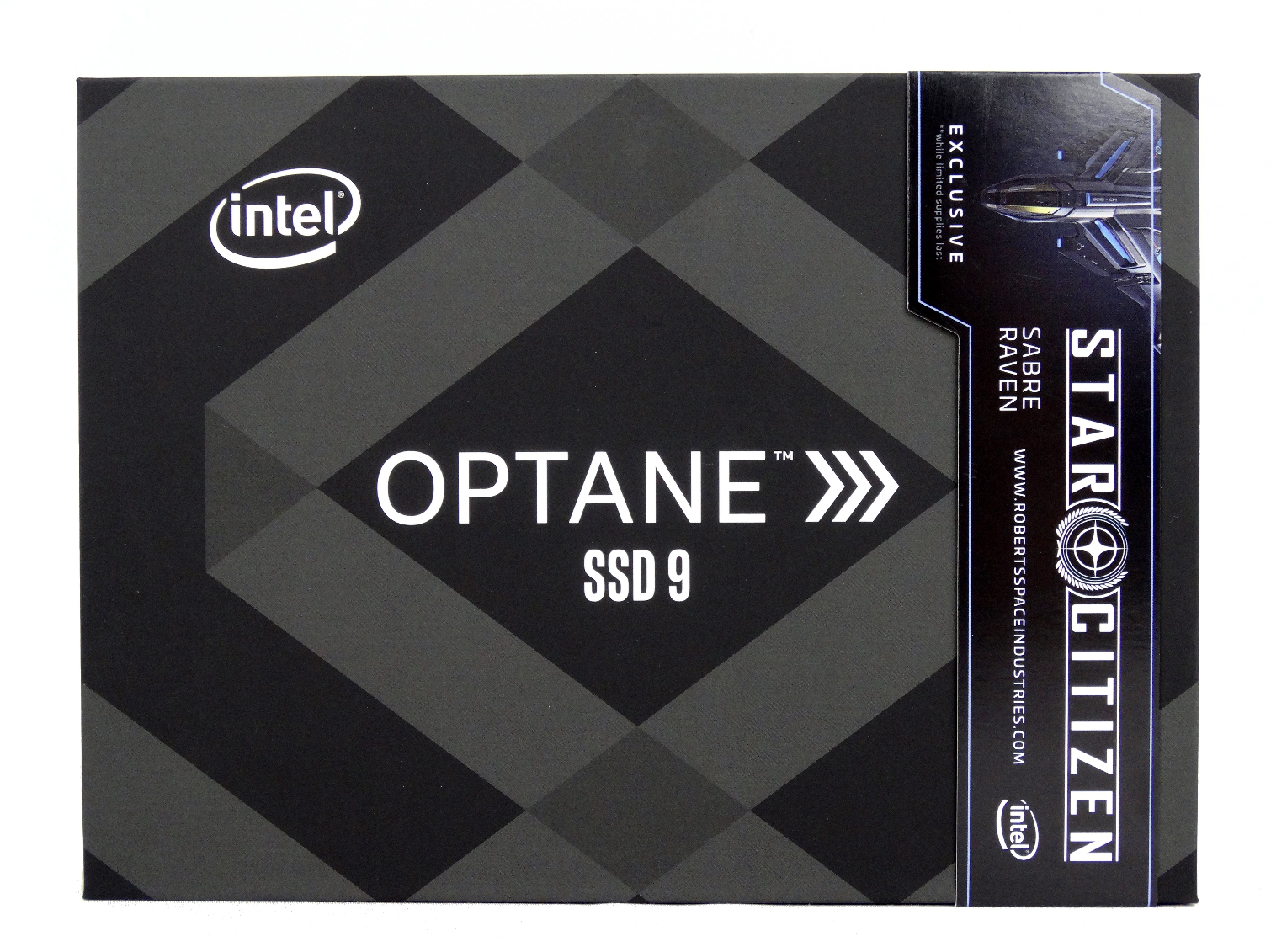
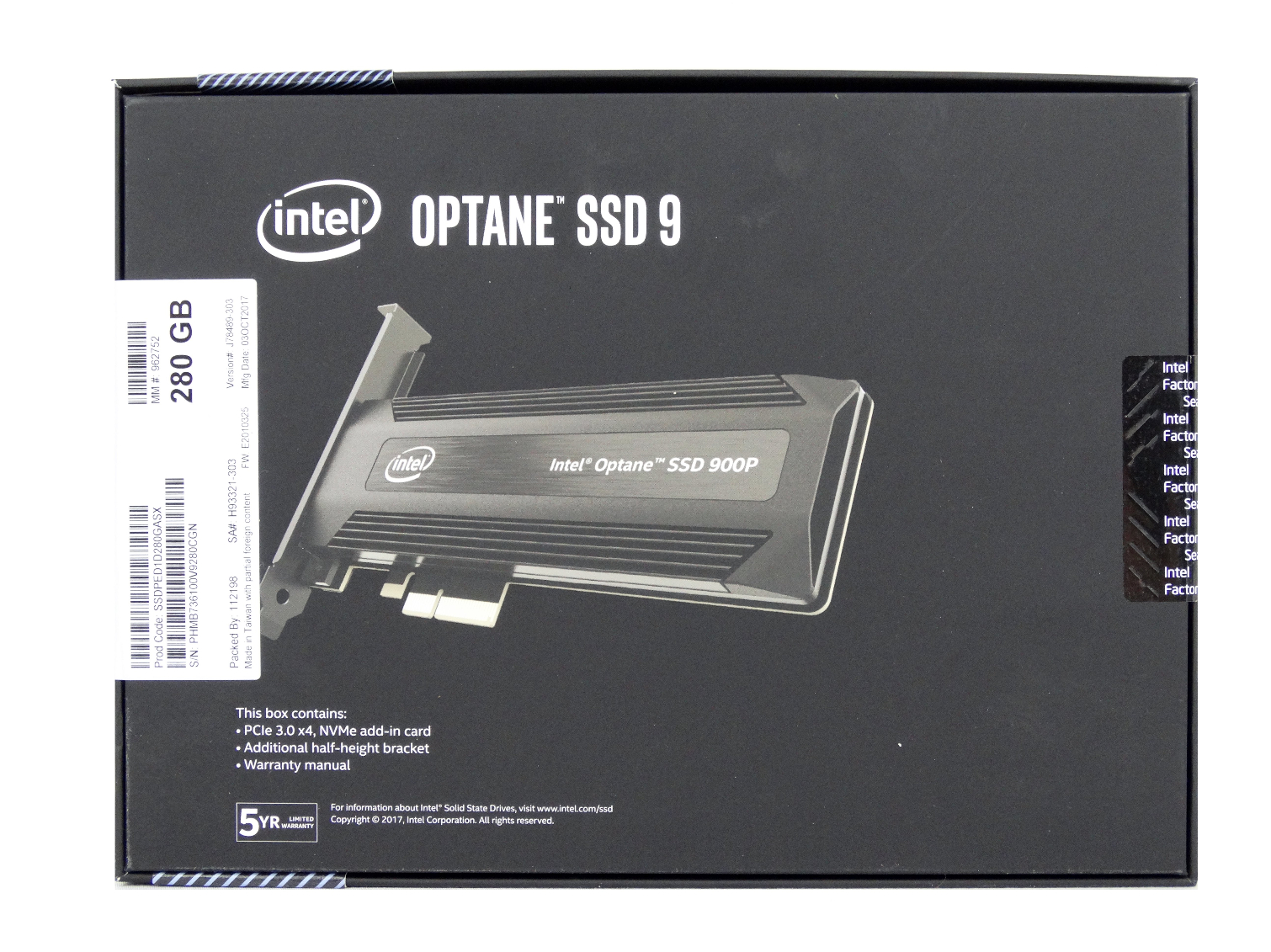

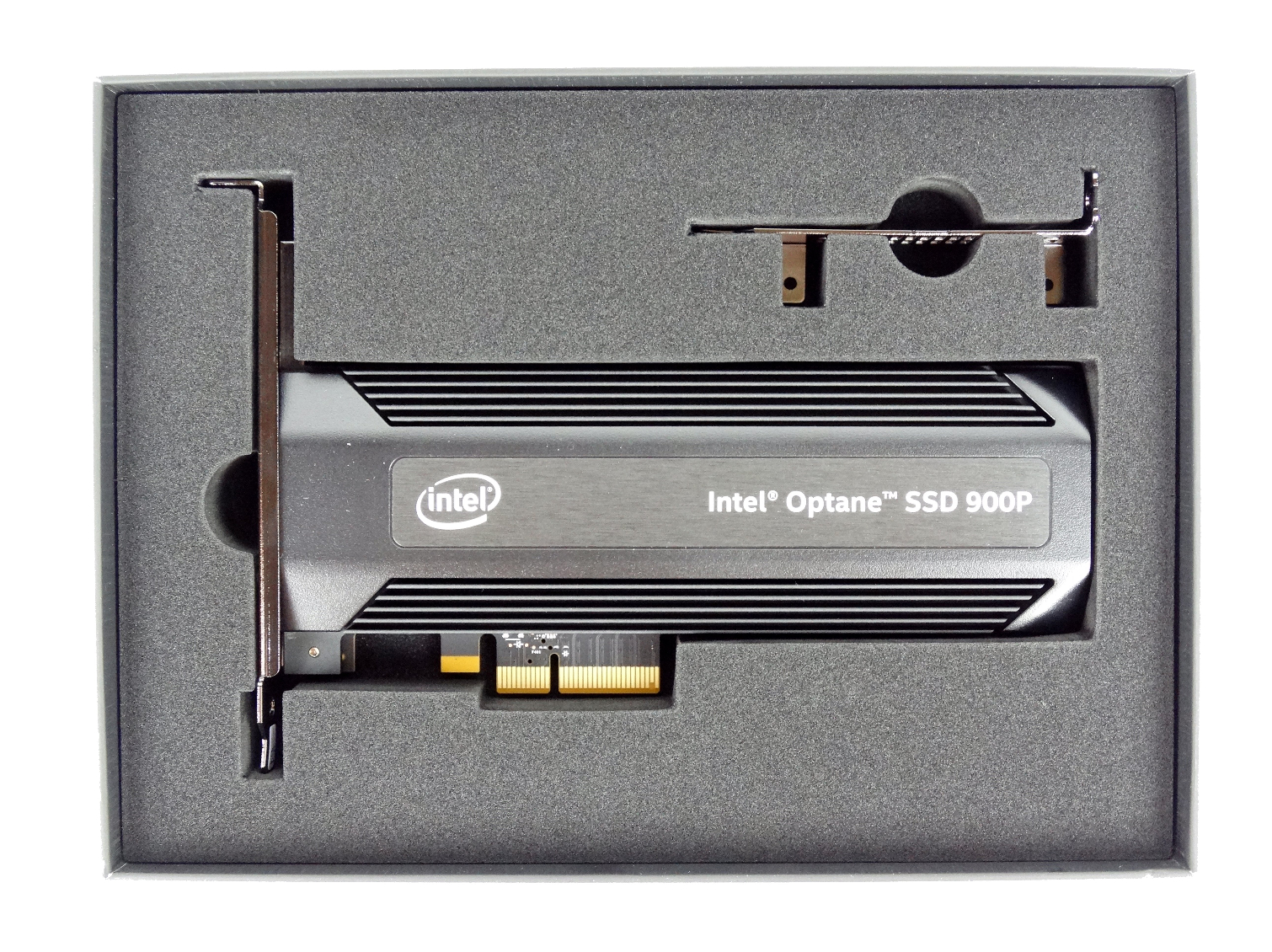
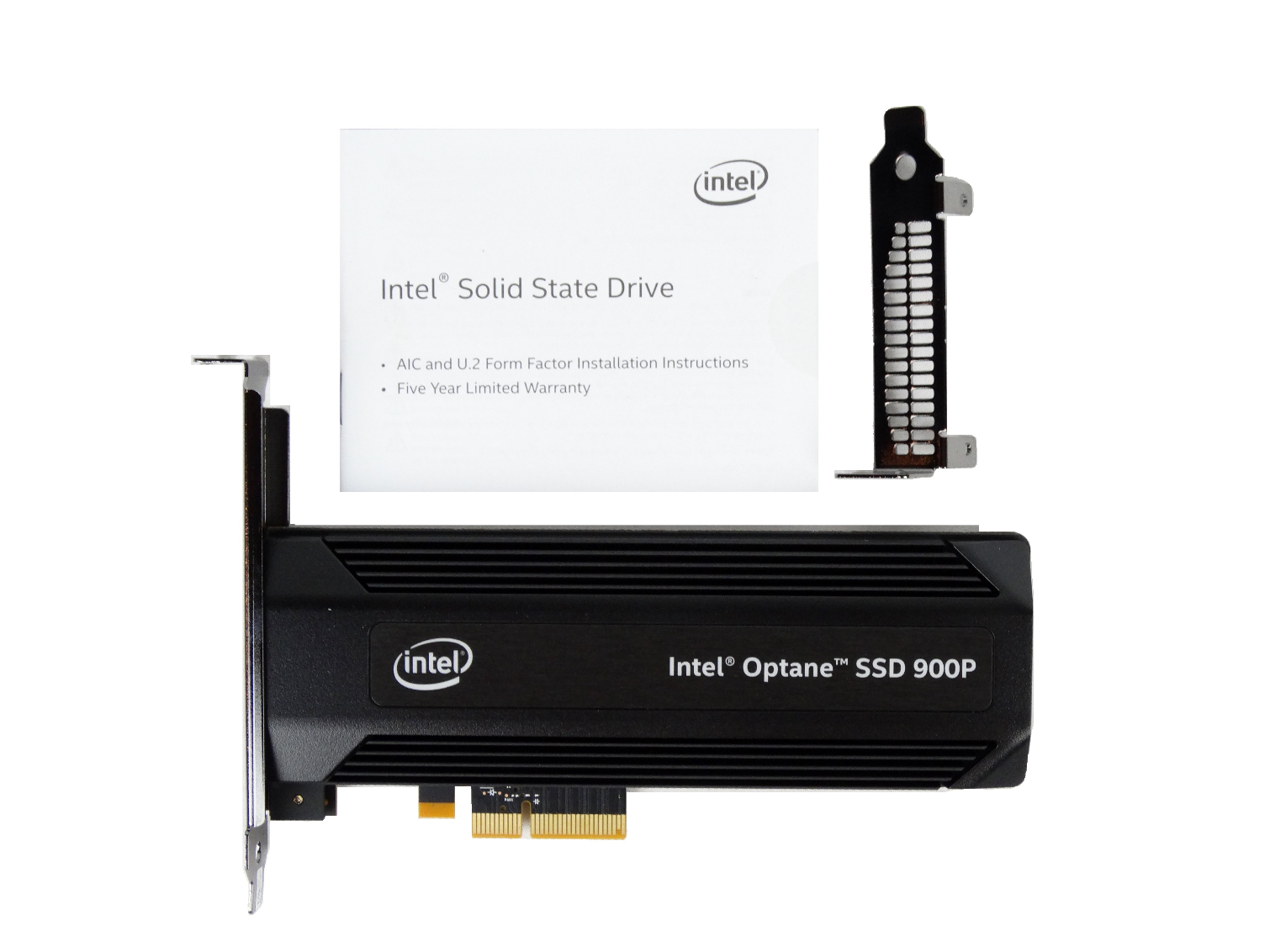
The Optane SSD 900P is the company's first consumer 9-series product. Intel chose an appropriate drive for the top-shelf designation.
To coincide with the launch, Intel will show off the drive for the first time at CitizenCon, a community gathering of Roberts Space Industries' Star Citizen players. As part of the partnership, the Optane SSD 900P will ship with a download code for an exclusive in-game Sabre Raven ship that has unique in-game capabilities. As you might have guessed, the Sabre Raven's specialty has to do with it's over the top speed.
The drive ships with an additional bracket for true half-height, half-length use in smaller chassis.
Addressing PCIe 4.0 And LED/RGB Rumors
Intel hasn't explained why some online retailers posted product pages for additional models. The official explanation is that there are different part numbers for Star Citizen bundles and the standard models will come later. Earlier in the year, a leaked slide emerged with the correct 900P specifications. That sole screenshot had an image of a 900P with a lighting effect from either LEDs or RGB LEDs. Intel didn’t announce that product today, and the company doesn't discuss unreleased products.
On the reseller side, we found a few references to PCI Express 4.0 and the corresponding part numbers. The listings came just days after PCI-SIG announced the final specifications for PCIe 4.0. We think this may have been an error on the resellers part, possibly related to the 900P's PCIe 3.0 x4 interface. We should see PCIe 4.0 platforms and components in 2018, but it wouldn't make sense for Intel to release a PCIe 4.0 product now.
A Closer Look
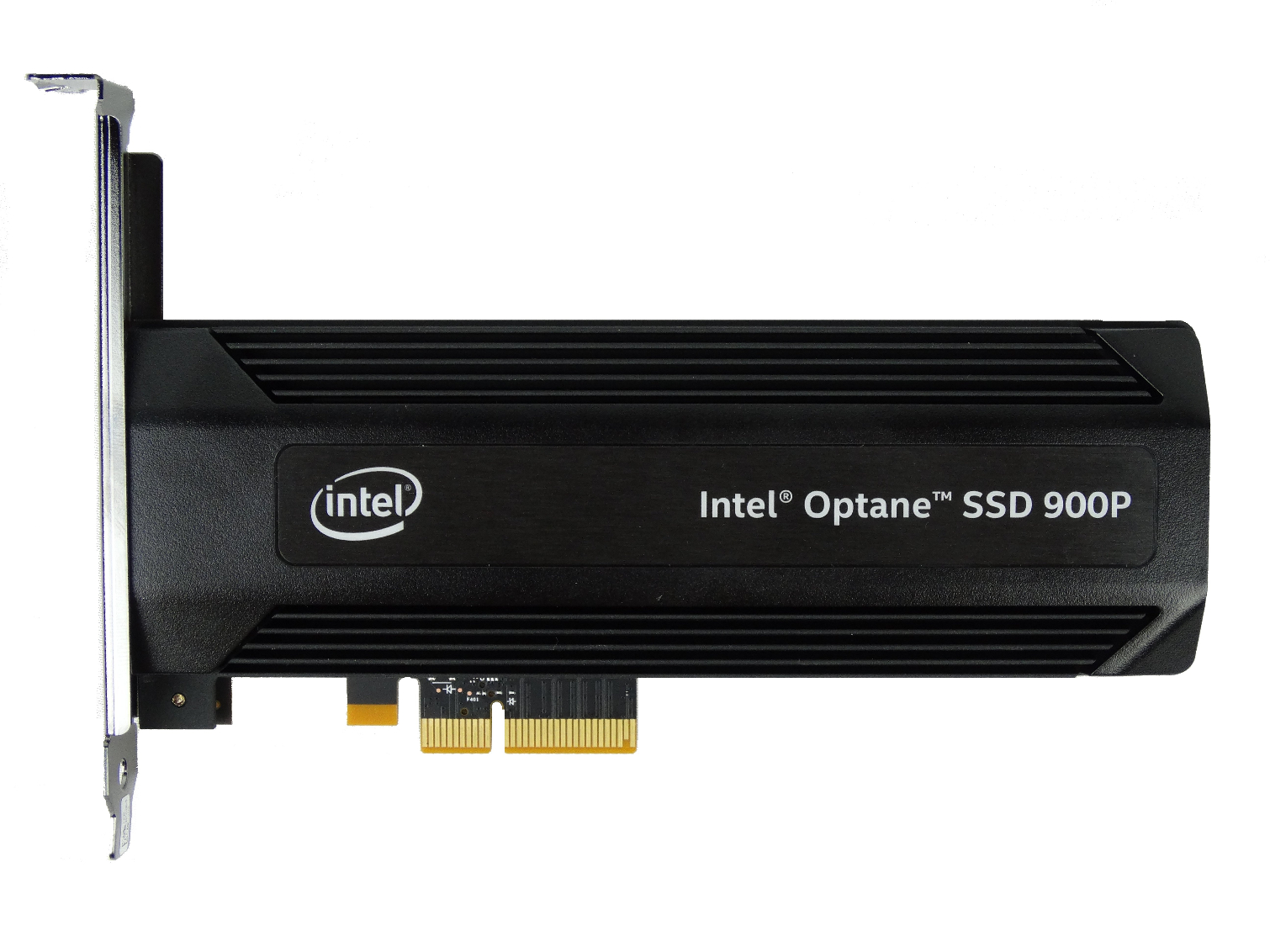

There isn't much to see on the drive thanks to two metal covers that act as heatsinks and protect the sensitive surface mount components. The drive does look great, but we have to wonder what happened to the LED version that was pictured in a leak from Asia earlier in the year.
Internals
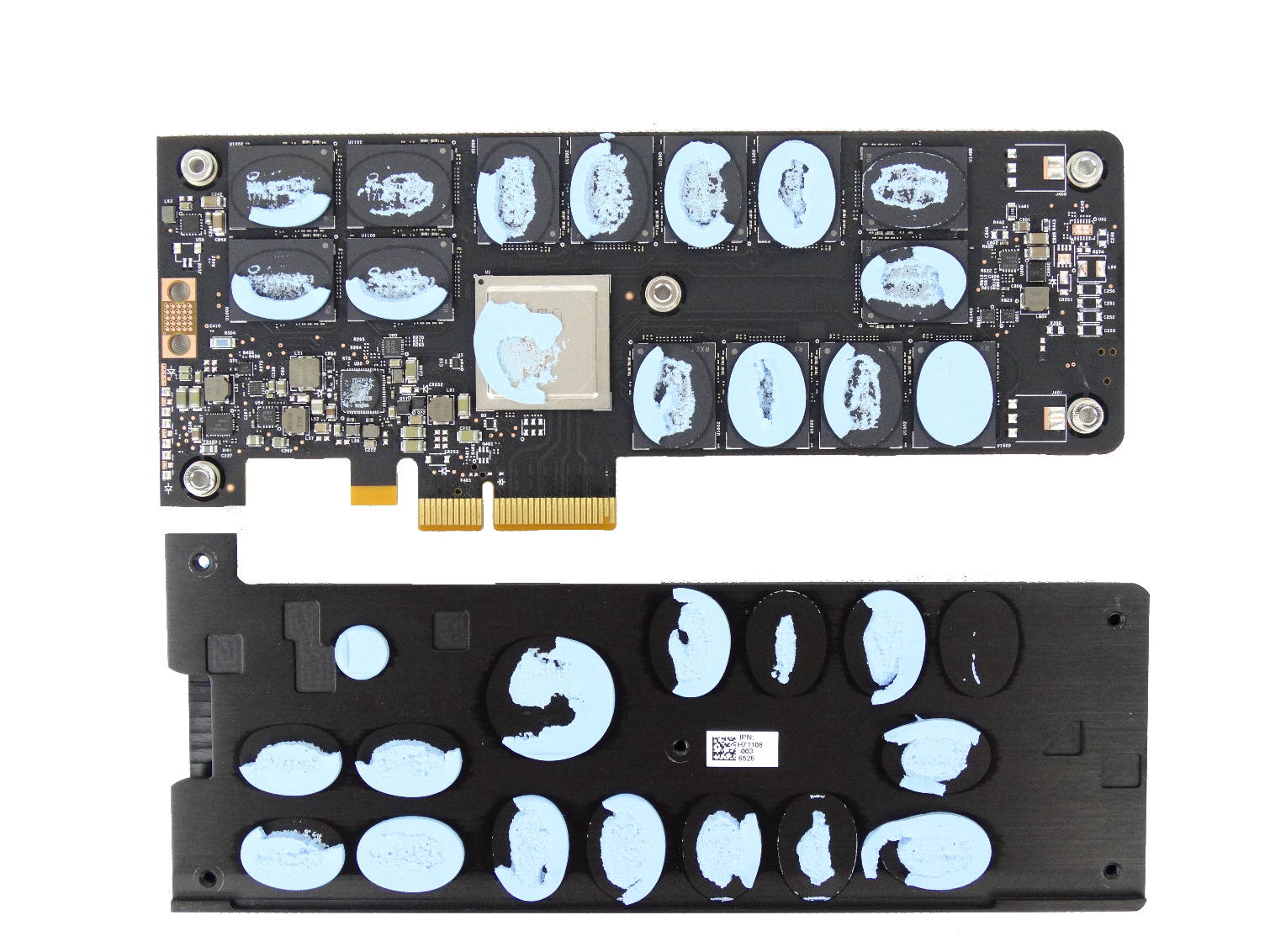
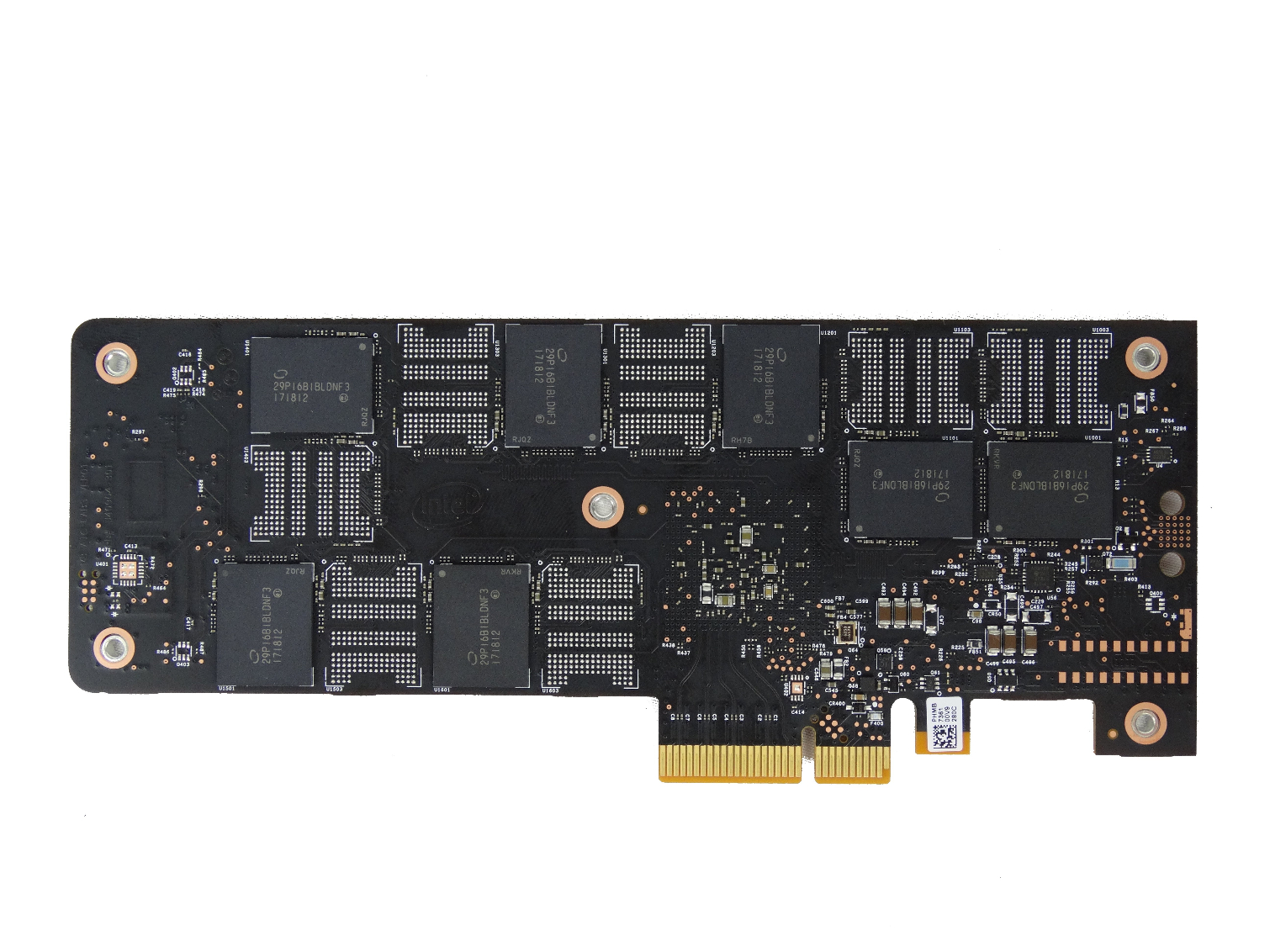

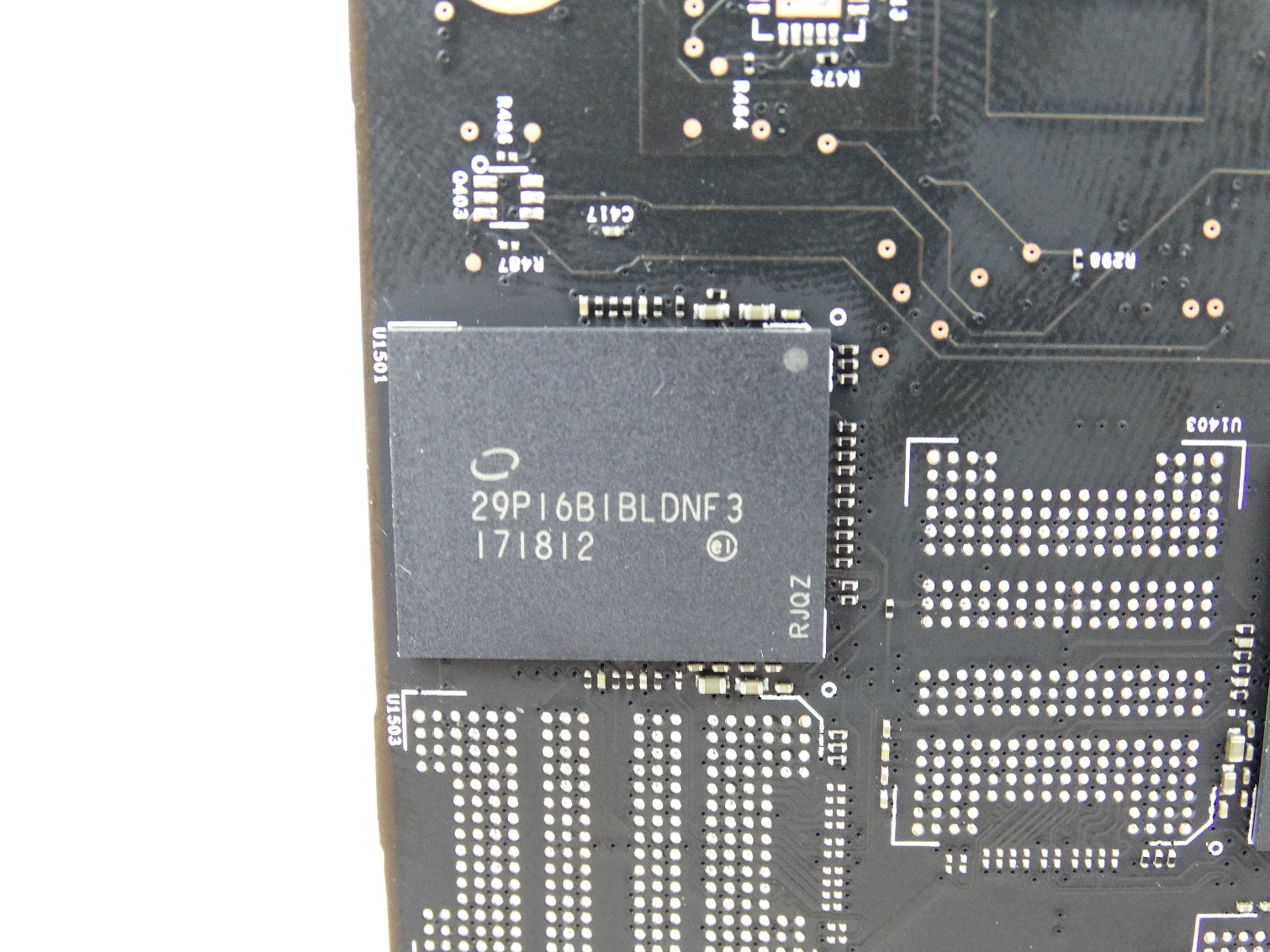
We found Intel's custom seven-channel ASIC NVMe controller underneath the heatsink. It can address up to four die per channel (28 total). The 900P 280GB comes with 21 16GB packages spread over both sides of the PCB. That gives us a raw capacity of 336 GB of 3D XPoint memory.
NAND-based SSDs have spare area, which is a portion of the capacity that the user cannot address. Some of the spare area is dedicated to ECC overhead and device-level RAID implementations that boost reliability. The remainder of the spare area is usually dedicated to over-provisioning, which increases performance and endurance.
Optane SSDs have spare area, but they don't use it in the traditional sense because many of the normal SSD rules don't apply. Instead, they use the extra space for ECC and metadata at the device level, and unlike NAND, they don't include any built-in over-provisioning at the die level. We can also assume that some of the extra capacity is used to replace failed cells.
We don't recommend removing the heatsink. Doing so damages the thermal pads because they don't separate cleanly. The custom ASIC controller and 3D XPoint packages don't provide us with a lot of additional information, just like Intel. The secrecy is still strong with this product, so we have limited technical information to share.
MORE: Best SSDs
MORE: How We Test HDDs And SSDs
MORE: All SSD Content

Chris Ramseyer was a senior contributing editor for Tom's Hardware. He tested and reviewed consumer storage.
-
Aspiring techie If Intel would have properly implemented NVMe raid, imagine what would happen if you put 8 of these in RAID 0.Reply -
hdmark Can someone comment on the statement "your shiny new operating system was designed to run on an old hard disk drive. "? I somewhat understand it, but what does that mean in this case? If microsoft wanted... could they rewrite windows to perform better on an SSD or optane? Obviously they wont until there are literally no HDD's on the market anymore due to compatibility issues but I just wasnt sure what changes could be made to improve performance for these faster drives.Reply -
AgentLozen Thanks for the review. I have a couple questions if you don't mind answering them.Reply
1. Is PCI-e 3.0 a bottleneck for Optane drives (or even flash in general). If solid state drive developers built PCI-e 4.0 drives today, would they scale to 2x the performance of modern 3.0 drives assuming there were compatible motherboards?
2. Can someone explain what queue depth is and under what circumstances it's most important? The benchmarks show WILD differences in performance at various queue depths. Does it matter that flash based drives catch up at greater queue depths? Is QD1 the most important measurement to desktop users?
3. In the service time benchmarks, it seems like there is no difference between drives in World of Warcraft, Battlefield 3, Adobe Photoshop, Indesign, After Effects. Sequential and Random Read and Write conclude "Optane is WAAAAY better" but the application service time concludes "there's no difference". Is it even worth investing in an Intel Optane drive if you won't see a difference in real world performance? -
AndrewJacksonZA This...Reply
I mean...
This is just...
.
.
.
I want one. I want ten!!!
Also, "Where Is VROC?" listed as a con? Hehe, I like how you're thinking. :-) -
dudmont Reply20314320 said:Can someone comment on the statement "your shiny new operating system was designed to run on an old hard disk drive. "? I somewhat understand it, but what does that mean in this case? If microsoft wanted... could they rewrite windows to perform better on an SSD or optane? Obviously they wont until there are literally no HDD's on the market anymore due to compatibility issues but I just wasnt sure what changes could be made to improve performance for these faster drives.
Simplest way to answer is the term, "lowest common denominator". They(MS) designed 10 to be as smooth and fast as a standard old platter HD could run it, not a RAID array(which a SSD is basically a NAND raid array), or even better an XPoint raid array. Short queue depths(think of data movement as people standing in line) were what Windows is designed for, cause platter drives can't do more data movements than the number of heads on all the platters combined without the queue(people in line) growing, and thus slowing things down. In short, old platter drives can slowly handle like 8-20 lines of people, before they start to clog up, while nand, can quickly handle many lines of people(how many lines depends on the controller and the number of nand packages). Admittedly, it may not be the best answer, but it's how I visualize it in my head. -
hdmark Reply20314454 said:20314320 said:Can someone comment on the statement "your shiny new operating system was designed to run on an old hard disk drive. "? I somewhat understand it, but what does that mean in this case? If microsoft wanted... could they rewrite windows to perform better on an SSD or optane? Obviously they wont until there are literally no HDD's on the market anymore due to compatibility issues but I just wasnt sure what changes could be made to improve performance for these faster drives.
Simplest way to answer is the term, "lowest common denominator". They(MS) designed 10 to be as smooth and fast as a standard old platter HD could run it, not a RAID array(which a SSD is basically a NAND raid array), or even better an XPoint raid array. Short queue depths(think of data movement as people standing in line) were what Windows is designed for, cause platter drives can't do more data movements than the number of heads on all the platters combined without the queue(people in line) growing, and thus slowing things down. In short, old platter drives can slowly handle like 8-20 lines of people, before they start to clog up, while nand, can quickly handle many lines of people(how many lines depends on the controller and the number of nand packages). Admittedly, it may not be the best answer, but it's how I visualize it in my head.
That helps a lot actually! thank you!
-
WyomingKnott Queue depth can be simplified to how many operations can be started but not completed at the same time. It tends to stay low for consumer applications, and get higher if you are running many virtualized servers or heavy database access.Reply
With spinning metal disks, the main advantage was that the drive could re-order the queued requests to reduce total seek and latency at higher queue depths. With NMMe the possible queue size increased many-fold (weasel words for I don't know how much), and I have no idea why they provide a benefit for actually random-access memory. -
TMTOWTSAC Reply20314320 said:Can someone comment on the statement "your shiny new operating system was designed to run on an old hard disk drive. "? I somewhat understand it, but what does that mean in this case? If microsoft wanted... could they rewrite windows to perform better on an SSD or optane? Obviously they wont until there are literally no HDD's on the market anymore due to compatibility issues but I just wasnt sure what changes could be made to improve performance for these faster drives.
Off the top of my head, the entire caching structure and methodology. Right now, the number one job of any cache is to avoid accessing the hard drive during computation. As soon as that happens, your billions of cycles per second CPU is stuck waiting behind your hundredths of a second hard drive access and multiple second transfer speed. This penalty is tens of orders of magnitude greater than anything else, branch misprediction, in-order stalls, etc. So anytime you have a choice between coding your cache for greater speed (like filling it completely to speed up just one program) vs avoiding a cache miss (reserving space for other programs that might be accessed), you have to weigh it against that enormous penalty. -
samer.forums where is the power usage test ? I can see a HUGE heatsink on that monster , and I want the Wattage of this card compared to other PLEASE.Reply
This SSD cant be made M2 card . so Samsung 960 pro has a huge advantage over it. -
dbrees A lot of the charts that show these massive performance gains are captioned that this is theoretical bandwidth which is not seen in actual usage due to the limitations of the OS. I get it, it's very cool, but if the OS is the bottleneck, no one in the consumer space would see a benefit, especially since NVMe RAID is still not fully developed. If I am wrong, please correct me.Reply
